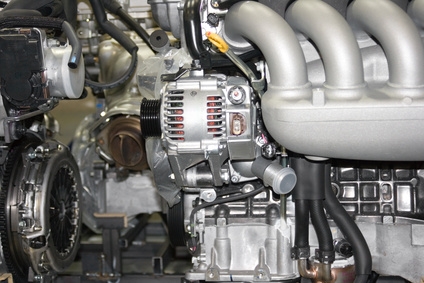
One of the most important maintenance tasks that you need to perform on your Toyota Echo is an oil change. Engine oil provides lubrication for your engine, but over the course of time, impurities will collect in the oil, reducing its effectiveness. Changing the oil every 3,000 to 5,000 miles helps extend the life of your engine and prevents it from seizing. If you change the oil yourself, you can save yourself some money and you can do it in less than an hour.
Park the Echo on a flat surface. Let the engine cool down if it's been running for a while, or let it run for a couple of minutes if it's cold. You want the oil to be warm enough that it will flow out of the engine block easily, but not so hot that it can burn you.
Go underneath the car and locate the oil drain plug. It will be located on the drain pan towards the front wheel on the passenger side of the car.
Put a drain pan underneath the plug and loosen it with a 14 mm socket wrench until you can unscrew it by hand. Keep pressure against the bolt as you unscrew it, so the oil doesn't come gushing out. When you have completely unscrewed the bolt, remove it and allow the oil to drain into the pan.
Remove the oil cap (it says "Engine Oil Only") from the top of the engine. This will equalize the pressure in the engine and help the oil to flow out of the engine.
Let the oil drain into the pan until it is down to a steady drip.
Screw the drain plug back into the drain pan, then tighten it with the wrench. Don't over-tighten the bolt, or you can strip the threads.
Pour the old oil in the drain pan into a sturdy plastic container like an old antifreeze container.
Place the drain pan underneath the oil filter.
Loosen the oil filter with a filter wrench, then unscrew it by hand. After you have completely unscrewed it from the engine, keep the open end pointed upwards so that you don't spill the old oil in the filter.
Turn the filter upside-down in the drain pan to empty the oil.
Dip your finger into the new oil and run it along the rubber gasket of the new oil filter (this will help the filter go into place more easily).
Screw the new oil filter to the engine, but don't over-tighten it.
Pour the new oil into the engine.
Put the oil cap back on, then turn the engine on and let it run for a couple of minutes. Turn the engine off and check the oil level on the dipstick. If it's below the "Add" line, add more oil to the engine.